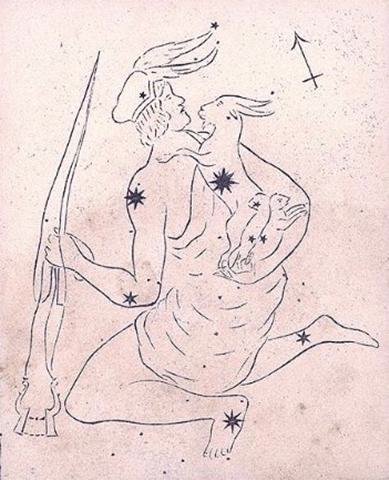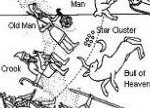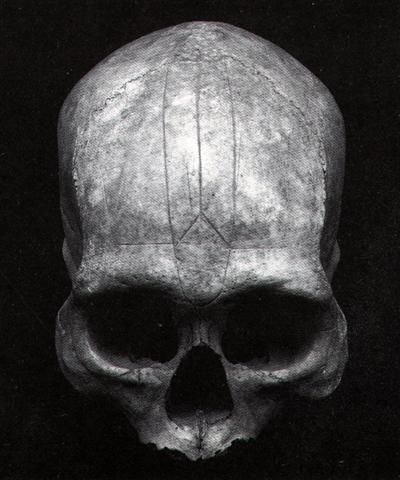The growth of my comments ('translations') made me then decide to change my initial idea of a single page per glyph line. My 2nd page for line Ga1 ought to begin after Ga1-6, i.e. after ║May 26 (146 = 2 * 73). 52 * 6 = 312 = 4 * 78 = 13 * 24. *66 = 366 - 300. Focus here changes from Taurus to Auriga: The point of the upper horn of the Bull (Elnath, β Tauri, cfr Ga1-16) touches the left foot of the Charioteer (Auriga), indeed it here becomes γ Aurigae:
... When it was evident that the years lay ready to burst into life, everyone took hold of them, so that once more would start forth - once again - another (period of) fifty-two years. Then (the two cycles) might proceed to reach one hundred and four years. It was called 'One Age' when twice they had made the round, when twice the times of binding the years had come together. Behold what was done when the years were bound - when was reached the time when they were to draw the new fire, when now its count was accomplished. First they put out fires everywhere in the country round. And the statues, hewn in either wood or stone, kept in each man's home and regarded as gods, were all cast into the water. Also (were) these (cast away) - the pestles and the (three) hearth stones (upon which the cooking pots rested); and everywhere there was much sweeping - there was sweeping very clear. Rubbish was thrown out; none lay in any of the houses. Changing the star's status from β to γ could possibly describe how at the proper time the 'dead old gods' were thrown out from the inside of the houses. Auriga (Crook) would then be a member of the new pantheon while the old gods could have been represented by the Perseus (Old Man) constellation:
... Old Man (Perseus) The Old Man rises in the final month of the year and is appropriately associated with Enmesharra - an ancestral god who resides in the underworld in the form of a ghost ... Fishing lines could have been a way to indicate the Milky Way river:
Tagata with a death skull in Ga1-11 was in rongorongo times standing where the Milky Way (blue line in the star chart above) ran through the 'gateway' between Haedus I and Haedus II. Into the 'waters' of this mighty 'river' the images of the old gods could have been thrown. According to the calendar of Gregorius XIII this was where ║May ended:
The glyph type hanau ('birth') has undulating (wave-formed) legs and this could have been intended to show how life emerges from water:
| |||||||||||||||||||||||||||||||||||||||||||||||||||||||||||||||||||||||||||||||||||||||||||||||||||||||||||||||||||||||||||||||||||||||||||||||||||||||









